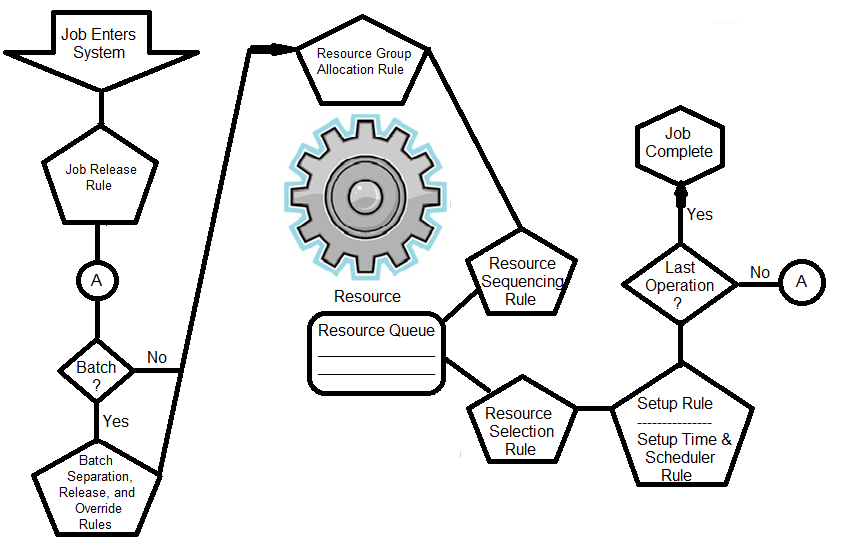Overview
We will begin by discussing the Scheduler’s flow of logic and where rules come into play. There are 8 different rule types that can be user defined. In the drop down list on the form you will see something like “User Defined Allocation Rule 12,” etc. That will indicate the user defined rule numbers that you can create. Following is a table which contains each type of rule, where it is found on the SyteLine forms, what numbers are allowed, and how it fits into the Scheduler’s logic flow. Following that table is a figure which shows how a job progresses through the system from the Scheduler’s rule point of view
| Rule (SyteLine form) | Range of User Defined Rules Allowed | How the Rule Fits into the Scheduler Logic |
|---|---|---|
| Job Release Rule (Shop Floor Control Parameters - Scheduling tab [pre-SL 8.03] or Scheduling Parameters [SL 8.03 and later]) | 10-39 | This rule is applied to provide a tie breaker to determine the sequence jobs are released into the system if two or more jobs have the same release date. |
| Sequencing Rule and Tiered Rules 1-3 (Resource form) and Global Sequencing Rule (Shop Floor Control Parameters – Scheduling tab [pre-SL 8.03] or Scheduling Parameters [SL 8.03 and later] ) | 23-39 | This rule applies when a job arrives at a resource group. The rule provides a ranking when a job enters the queue for a resource group. |
| Selection Rule (Resource form) | 22-39 | This rule applies when a resource becomes available to determine which job to process next at the resource. |
| Allocation Rule (Resource Groups) | 8-39 | This rule applies when resource is to be chosen from a resource group to process a job at an operation. |
| Setup Rule (Operations forms) | 3-39 | This rule is applied to determine whether a setup should be done at an operation. |
| Scheduler Rule and Setup Time Rule (Operations forms) | 11-39 | This rule is applied to determine the time a job spends on an operation. |
| Separation Rule (Batch Definitions) | 3, 5-9 | This rule is applied to determine how to group jobs together into batches, if not a batched production. |
| Release Rule (Batch Definitions) | 4-9 | This rule is applied to determine when to release a batch by determining what quantity a job applies to the batch, if not a batched production. |
| Override Rule (Batch Definitions) | 2-9 | This rule is applied to override the release quantity, if not a batched production. |
